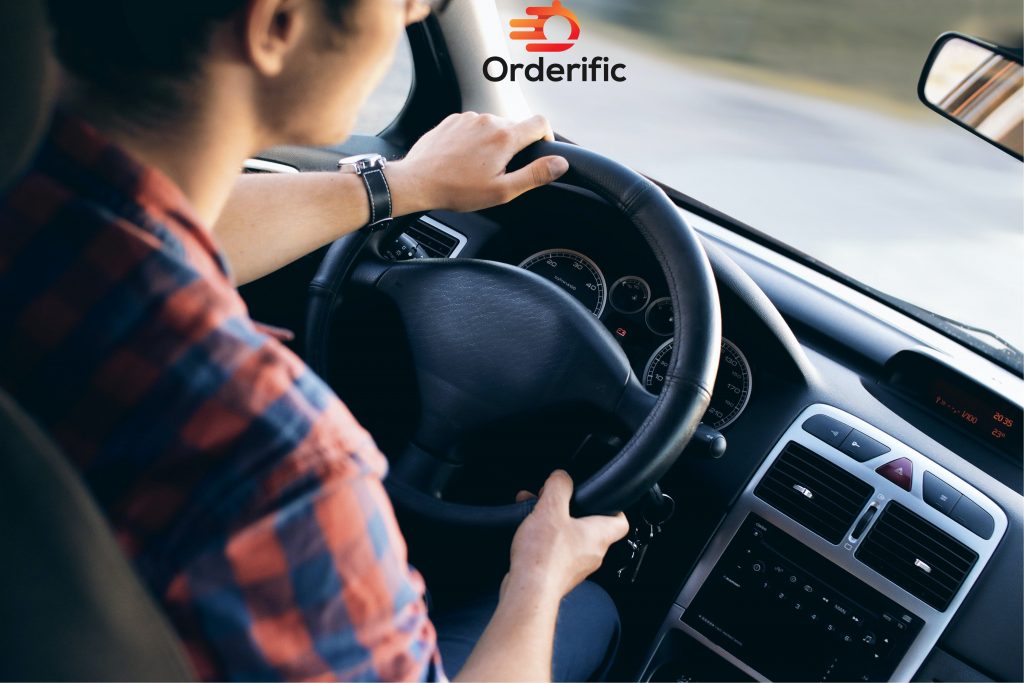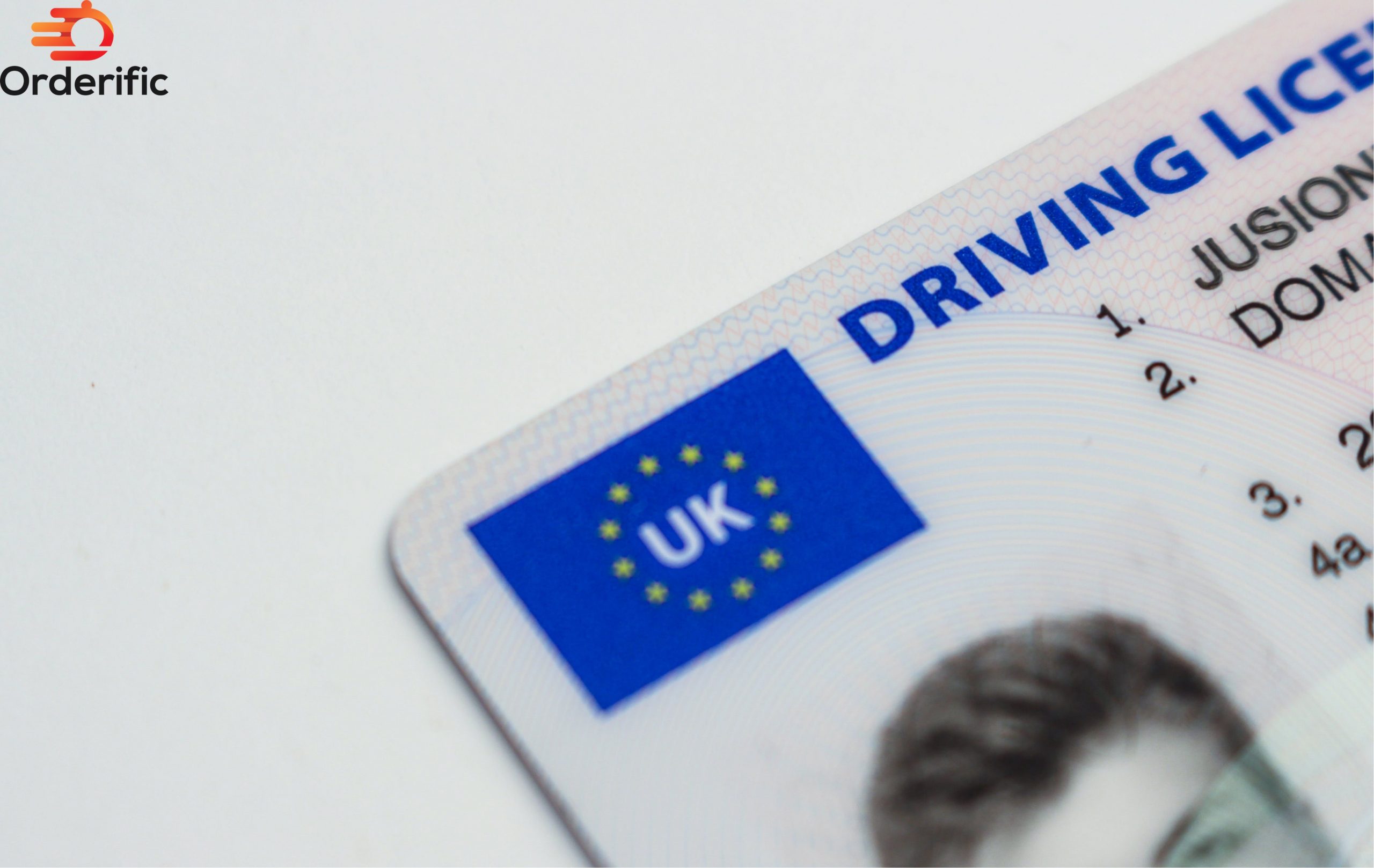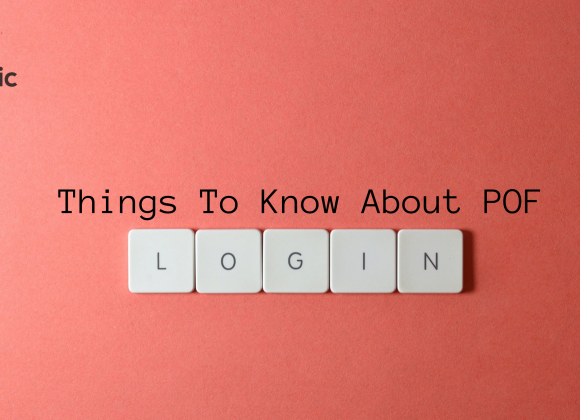Introduction
Welcome to your comprehensive guide on acquiring a Connecticut Driver’s License. From understanding the role of the Connecticut Department of Motor Vehicles (CT DMV) in issuing driver’s licenses and permits to the intricacies of the road test, we have you covered. Whether you’re a first-time driver or moving in from another state, our guide will provide all the necessary information. We’ll delve into the requirements, such as the necessity of a Social Security Number, explain the differences between a Real ID and a State ID, and navigate you through the licensing process. This guide also touches on other licenses, such as business and dog license applications. Buckle up, and let’s start your journey towards driving in Connecticut.
Types Of Connecticut Driver’s Licenses
Non-Commercial Driver’s Licenses
Connecticut driving aspirants, here is your essential guide to obtaining a Connecticut Driver’s License. The CT DMV leads the licensing process, from issuing learners permits to conducting road tests. Your journey to becoming a driver in Connecticut begins with understanding the role of your Social Security number in the process. You’ll need to familiarize yourself with terms like Real ID and State ID and their differences. Remember that the licensing extends beyond just motor vehicles; our guide will also cover how to apply for a business or dog license. So, buckle up and get ready to navigate the Connecticut licensing system with us!
Commercial Driver’s Licenses
For those driving enthusiasts in Connecticut, obtaining your driver’s license involves several essential steps under the guidance of the Connecticut Department of Motor Vehicles (CT DMV). Your Social Security Number plays a critical role in this process. The journey includes understanding the differences between a Real ID and a State ID, which is valuable for any driver in the United States. Before taking your road test, you’ll obtain a learner’s permit, a crucial stepping stone in your driving journey. Remember, licensing extends beyond simple motor vehicles; you might also need to apply for a business or dog license. Buckle up and join us as we navigate you through the Connecticut licensing process.
Connecticut Driver’s License Requirements
- The Connecticut Department of Motor Vehicles (CT DMV) oversees the driver’s license process.
- You’ll need your Social Security Number to start your licensing journey.
- Understanding the differences between a Real ID and a State ID is essential.
- Your path to getting a license includes obtaining a learner’s permit before the road test.
- Licensing in Connecticut extends beyond motor vehicles; information on applying for business and dog licenses is also available.
Applying For Your Connecticut Driver’s License
New Residents Of Connecticut
If you’re a new resident in Connecticut, the first step towards obtaining a driver’s license is to transfer your out-of-state license. The CT DMV requires your Social Security Number, proof of Connecticut residency, and your current driver’s license for this process. If your out-of-state license has expired, you’ll be required to take a knowledge test and a road test. It’s also essential to understand the distinction between a Real ID and a State ID; this affects the documentation you’ll need. Remember, licensing extends beyond driving; you might need to secure other licenses like business or dog licenses as part of your settling-in process.
Eligibility Requirements For A Driver’s License
- You must be at least 16 years old to apply for a driver’s license in Connecticut.
- A learner’s permit is a prerequisite for the road test.
- You need to complete a state-approved driver’s education course.
- Provide proof of identity, which includes your Social Security Number.
- Pass the vision, knowledge, and road tests conducted by the CT DMV.
- Understand the difference between Real ID and State ID for documentation.
- Payment of appropriate fees is required for your license.
- Connecticut also requires different permits for businesses and pets like dogs.
The Connecticut Road Test
The Connecticut road test is crucial to getting your driver’s license. This practical evaluation, conducted by the CT DMV, examines your ability to control your vehicle and observe traffic laws. You must hold a learner’s permit, pass a vision and knowledge test, and complete a state-approved driver’s education course to apply. Remember, your journey doesn’t end with passing the road test, as the CT DMV may offer other business or dog licenses. Understand the difference between Real ID and State ID to ensure proper documentation. Happy driving!
The Written Exam In Connecticut
In Connecticut, the written exam is a crucial step toward obtaining your driver’s license. Administered by the CT DMV, the test gauges your knowledge of traffic rules, road signs, and safe driving practices. You must pass this alongside the vision test before your road test. Remember, your Social Security Number is needed throughout the process, and understanding the differences between Real ID and State ID is crucial. Remember, the CT DMV also handles licensing beyond motor vehicles, such as business and dog licenses.
The Connecticut Vision Screening
The Connecticut Vision Screening is a mandatory part of the licensing process conducted by the CT DMV. It is vital to ensure that you have adequate vision for safe driving. Alongside your Social Security Number and understanding the distinction between a Real ID and a State ID, this screening is essential for your road test and acquiring your driver’s license. Remember, the CT DMV also provides other licensing services, such as business and dog licenses.
Acceptable Identification Documents In Connecticut
In Connecticut, providing acceptable identification documents for your driver’s license application is crucial. This includes your Social Security Number, proof of identity, and Connecticut residency, which resonate with the Real ID or State ID criteria. The CT DMV underscores the need for these documents in your journey toward acquiring a license, whether for driving, running a business, or owning a dog. Your documentation validates your eligibility for the road test and sets the stage for your venture into other licensing realms.

Obtaining A Connecticut Driver’s License Under The Age Of 18
Getting Your CT Driver’s License Under The Age of 18 As A New Resident
If you’re under 18 and new to Connecticut, the first step to obtaining your driver’s license is to acquire a learner’s permit. This permit allows you to practice driving under the supervision of a licensed adult. You must visit the Connecticut Department of Motor Vehicles (DMV) to get your learner’s permit and provide certain documents. These documents include your Social Security Number, proof of identity, and proof of Connecticut residency.
You can prepare for the road test once you have your learner’s permit. Before taking the road test, you must pass a written exam and a vision screening, which the CT DMV will conduct. The written exam will assess your knowledge of Connecticut’s traffic laws and road signs, while the vision screening ensures that you have adequate vision to drive safely.
Understanding the difference between a Real ID and a State ID regarding the required documentation is essential. A Real ID is a form of identification that complies with federal security standards, while a State ID is a non-compliant form of identification. The type of ID you choose will determine the documents you need to present at the DMV.
The Connecticut GDL Program
The Connecticut Graduated Driver Licensing (GDL) program is specifically designed to provide a structured and comprehensive learning experience for young drivers under 18. It aims to equip them with the necessary skills and knowledge to become responsible and safe drivers on Connecticut’s roads.
The program follows a step-by-step process that begins with obtaining a learner’s permit. To apply for a learner’s permit, aspiring drivers need to provide proof of identity, including their Social Security Number and proof of Connecticut residency. This ensures that only eligible individuals can participate in the program.
Once the learner’s permit is obtained, drivers must pass a written exam and a vision screening conducted by the CT DMV. These assessments ensure that drivers have a solid understanding of the rules of the road and possess adequate visual acuity to operate a vehicle safely.
It is also essential for young drivers to grasp the distinction between a Real ID and a State ID. Knowing these differences helps them navigate the identification requirements when applying for certain services or entering certain federal facilities.
Driver’s Education In Connecticut
Driver’s education is a mandatory course required by the state of Connecticut for aspiring drivers under 18. This comprehensive program ensures that you acquire the skills and knowledge necessary for road safety, preparing you for the written exam and the road test conducted by the CT DMV. During this educational journey, having your Social Security Number handy is essential, understanding the distinction between a Real ID and a State ID and gathering other necessary documentation. These elements collectively form the foundation of your licensing process. It is worth noting that the CT DMV is also responsible for handling various licenses, including business and dog licenses. By providing these additional details, we aim to offer a more comprehensive understanding of the driver’s education system and its relation to the overall licensing journey in Connecticut.
Connecticut At-Home Driver’s Training
In Connecticut, at-home driver’s training supplements your required driver’s education, especially if you’re under 18. This comprehensive training program enhances your driving skills and prepares you for real-life situations. It covers various aspects, such as defensive driving techniques, understanding traffic laws and regulations, and developing a solid foundation of safe driving practices.
Participating in at-home driver’s training will give you valuable hands-on experience that will help you confidently navigate the roadways. The training not only focuses on preparing you for the road test administered by the CT DMV but also equips you with essential knowledge about important documents like the Real ID and State ID. It’s worth noting that the CT DMV also handles other licenses beyond driving, such as business and dog licenses, providing a comprehensive range of services to the community.
Driver’s License Age Requirements In Connecticut
In Connecticut, obtaining a driver’s license involves a step-by-step process managed by the Connecticut Department of Motor Vehicles (CT DMV). It’s essential to provide your Social Security Number, which is required for identification purposes. Additionally, it’s crucial to understand the difference between a Real ID and a State ID, as they have different documentation requirements.
To obtain a driver’s license, you must pass various tests administered by the CT DMV. These tests include a vision screening to ensure your eyesight meets the necessary criteria, a written exam to assess your knowledge of traffic laws and regulations, and a road test to evaluate your practical driving skills.
For new residents and young drivers under 18, specific requirements and programs are in place to ensure a smooth transition into Connecticut’s driving system. The CT DMV also handles additional licenses, such as business and dog licenses, catering to a wide range of licensing needs.
Getting A Connecticut Learner’s Permit
Learner’s Permit Driving Restrictions
In Connecticut, acquiring a learner’s permit is an essential initial step toward obtaining your driver’s license. This permit is designed for individuals under 18 years old, with specific restrictions to ensure safety and facilitate gradual learning. The Connecticut Department of Motor Vehicles (CT DMV) provides clear guidelines regarding these restrictions, which may include the requirement of adult supervision, limitations on driving hours, and passenger restrictions.
It’s crucial to understand the distinctions between a Real ID and a State ID and the importance of having your Social Security Number during this journey to obtaining a driver’s license in Connecticut. Remember, the CT DMV offers services related to driver’s licenses and facilitates the acquisition of other claims, such as business and dog licenses.
By following the necessary steps, adhering to the CT DMV guidelines, and staying informed about the licensing process, individuals can become responsible and legally authorized drivers in Connecticut.
Connecticut Adult Learner’s Permit
Connecticut adults seeking a learner’s permit must meet specific criteria outlined by the CT DMV. These requirements include providing your Social Security Number, proof of identity and residency, and understanding the difference between Real ID and State ID. Additionally, applicants must pass a vision test and a knowledge test that assesses their understanding of traffic laws and road signs.
Obtaining a learner’s permit is an essential step towards gaining the necessary road experience before taking the DMV-administered road test. It allows individuals to practice driving under supervision and gradually develop their skills and confidence.
It is also worth mentioning that the CT DMV assists with various types of licenses, including business and dog licenses. So, whether you are pursuing a driver’s license or need assistance with other licensing needs, the CT DMV is there to help.
How To Get A Connecticut Driver’s License
Provisional License Driving Restrictions In Connecticut
In Connecticut, provisional licenses play a crucial role in the driver’s licensing process, offering a step toward full driving privileges. These licenses come with specific restrictions carefully designed to ensure the safety of new drivers as they gain experience and confidence on the road. These limitations may include supervised driving, restricted driving hours to avoid high-traffic periods, and a limited number of passengers to minimize distractions.
To obtain a provisional license in Connecticut, applicants must provide their Social Security Number and demonstrate their understanding of the difference between a Real ID and a State ID. The Connecticut Department of Motor Vehicles (CT DMV) oversees this process and also handles issuing other essential licenses, such as business and dog licenses.
By implementing these measures, Connecticut aims to create a supportive environment for new drivers, encouraging responsible and safe driving practices while they develop their skills.
Getting Your Driver’s License As A New Resident Of Connecticut
As a new resident in Connecticut, transitioning your out-of-state license is the essential first step towards obtaining a driver’s license. The Connecticut Department of Motor Vehicles (CT DMV) requires several documents for this process. These include providing your Social Security Number, proof of Connecticut residency, and presenting your current driver’s license.
If your previous license has expired, additional steps are necessary. You will need to take both a knowledge test and a road test to ensure your driving skills meet Connecticut’s standards. It’s crucial to understand the distinction between a Real ID and a State ID, as it will determine the specific documentation you’ll need to provide.
Moreover, Connecticut offers various other licenses, such as business or dog licenses, catering to the different needs and interests of its residents. So, whether you need a specialized license or just want to explore the options available, Connecticut has you covered.
Married, Divorced, Or Name Change?
If you’ve recently undergone a name change due to marriage, divorce, or another valid reason, it’s crucial to update your driver’s license in Connecticut. The Connecticut Department of Motor Vehicles (CT DMV) requires proof of your legal name change, such as a marriage certificate or court order, in addition to your Social Security Number and an understanding of the difference between a Real ID and a State ID. It’s important to note that a Real ID is a federally compliant identification card that can be used for domestic air travel and access to federal facilities, while a State ID is a non-compliant identification card primarily used for identification purposes within the state.
Whether you’re updating your existing driver’s license or applying for a new one, it’s worth mentioning that the CT DMV also offers various types of licenses apart from the standard driver’s license. These include business licenses for entrepreneurs and professionals, as well as dog licenses to ensure the safety and well-being of our furry friends.
Remember, keeping your driver’s license up to date is not only a legal requirement but also ensures that you have a valid form of identification that accurately reflects your personal information. Stay compliant and informed with the CT DMV guidelines for a smooth and hassle-free license update or application process.
Does The REAL ID Act Impact Residents Of Connecticut?
Is Obtaining A REAL ID Mandatory in Connecticut?
The REAL ID Act, which was passed by Congress in response to heightened security concerns, has significant implications for identification used for federal purposes. While Connecticut has not made it mandatory to obtain a REAL ID, having one can greatly facilitate various federal activities that require proper identification. This includes not only boarding domestic flights and accessing federal buildings but also participating in other federal transactions. To obtain a REAL ID, individuals are required to provide their Social Security Number and meet specific criteria outlined by the REAL ID Act. It is crucial for individuals to be well-informed about the differences between a Real ID and a State ID to ensure compliance with federal regulations. Additionally, it’s worth noting that the Connecticut Department of Motor Vehicles (DMV) issues various other licenses, such as business and dog licenses, in addition to the standard ID options.
Is It A Good Idea To Get A REAL ID?
When deciding whether to obtain a REAL ID, it is important to assess your individual needs and circumstances. If you frequently engage in activities that require federal identification, such as boarding domestic flights or entering federal buildings, having a REAL ID can offer convenience and ease. However, it’s worth noting that in Connecticut, a REAL ID is not a mandatory requirement.
To apply for a REAL ID, make sure you have your Social Security Number and understand the distinction between a Real ID and a State ID in the application process. It’s always helpful to familiarize yourself with the specific requirements and documentation needed to ensure a smooth application process.
Additionally, remember that the Connecticut Department of Motor Vehicles (CT DMV) is available to assist you with other licenses, including business and dog licenses, in addition to your driver’s license. Their comprehensive services aim to provide support for various licensing needs.
How Do You Prepare To Apply For A REAL ID Card In Connecticut?
To apply for a REAL ID in Connecticut, you’ll need to gather and prepare the necessary documentation. This includes providing proof of your identity, residency, and Social Security Number. It’s important to understand the distinction between a Real ID and a State ID.
While a Real ID is not mandatory, having one can greatly facilitate federal activities, such as domestic flights. With a Real ID, you can breeze through airport security checkpoints without the need for additional identification. It’s a convenient way to ensure a smooth travel experience.
Aside from identification services, the CT DMV also offers a range of other services. This includes obtaining business licenses for aspiring entrepreneurs and even licenses for your furry friends – dog licenses. So, whether you’re looking to start a new business venture or ensure your canine companion is properly registered, the CT DMV has got you covered.
REAL ID Fees In Connecticut
The cost of obtaining a REAL ID in Connecticut varies depending on the type of ID you’re requesting and your age. However, you should be prepared for a fee, as obtaining a REAL ID is not free. Make sure you have your Social Security Number and understand the distinction between a Real ID and a State ID before applying. It’s important to note that a Real ID is a federally compliant form of identification that requires additional documentation, while a State ID is a non-federally compliant identification option. Additionally, the Connecticut Department of Motor Vehicles (DMV) offers various licenses, including business and dog licenses, in addition to your driver’s license.
Applying For A Commercial Driver’s License In Connecticut
Connecticut Commercial Learner’s Permit
In the state of Connecticut, if you aspire to become a commercial driver, obtaining a Commercial Learner’s Permit (CLP) is a crucial first step. This permit allows you to gain valuable practical experience on the road, under the supervision of a licensed commercial driver, before obtaining a full commercial driver’s license.
To apply for a CLP, there are a few requirements you need to fulfill. First, you will need to provide your Social Security Number as part of the application process. Additionally, you will need to pass a written exam that tests your knowledge of commercial driving regulations and practices. Lastly, you must meet specific medical standards to ensure that you are physically fit to operate a commercial vehicle.
It’s important to note that during the application process, you should understand the difference between a Real ID and a State ID. The Real ID Act establishes minimum security standards for state-issued driver’s licenses and identification cards, which are required for certain federal purposes. Familiarizing yourself with this distinction will help ensure that you provide the correct documentation during the application process.
What Happens If I Fail My CDL Knowledge Test?
If you happen to fail your Commercial Driver’s License (CDL) knowledge test in Connecticut, there’s no need to stress. The CT DMV understands that everyone deserves a second chance, so they allow retakes, giving you another opportunity to successfully pass the test. It’s important to remember that in this journey, having a clear understanding of the difference between Real ID and State ID is crucial. Additionally, providing your Social Security Number is a requirement for the process. It’s worth noting that apart from CDLs, the DMV also issues various other licenses, including business licenses and even dog licenses, catering to the different needs and interests of the community.
Connecticut CLP Restrictions
In Connecticut, holders of a Commercial Learner’s Permit (CLP) face certain restrictions to ensure road safety. The CLP allows individuals to gain practical commercial driving experience under the supervision of a licensed commercial driver, providing a valuable opportunity to hone their skills and knowledge in a controlled environment. It is important to note that while operating under a CLP, drivers must adhere to specific rules and regulations, such as driving within certain designated hours and maintaining a clean driving record. These measures are put in place to promote safety on the roads and ensure that aspiring commercial drivers are well-prepared for the demands of their profession.
When applying for a CLP in Connecticut, it is essential to have certain documents and information readily available. This includes your Social Security Number, which is required for identification purposes and to facilitate the application process. Additionally, having a clear understanding of the difference between a Real ID and a State ID is important, as it may impact the type of identification you use during the application process.
It is worth noting that the Connecticut Department of Motor Vehicles (DMV) not only handles licensing needs related to driving but also provides services for other licensing requirements, such as obtaining business and dog licenses. This comprehensive approach ensures that individuals and businesses can conveniently access the necessary licenses and permits to meet their specific needs.
Applying For A Connecticut CDL
To apply for a Commercial Driver’s License (CDL) in Connecticut, you must first obtain a Commercial Learner’s Permit (CLP) and meet certain criteria. This includes successfully passing a skills test that evaluates your driving abilities, as well as providing your Social Security Number for identification purposes. It’s also important to understand the distinction between a Real ID and a State ID, as they have different requirements and purposes. Remember, the Connecticut Department of Motor Vehicles (CT DMV) not only handles CDLs but also oversees other licenses such as business and dog licenses, ensuring compliance and safety across various realms.
CDL Fees In Connecticut
Obtaining a Commercial Driver’s License (CDL) in Connecticut entails various costs that depend on the type of CDL and any endorsements associated with it. It’s important to be aware of potential additional expenses, such as testing fees or fees for replacing a lost CDL. During the application process, you will be required to provide your Social Security Number and understand the distinction between a Real ID and a State ID. Rest assured, the Connecticut Department of Motor Vehicles (CT DMV) not only caters to your driving license needs but also handles the issuance of other licenses, including business and dog licenses, ensuring comprehensive services for all your licensing requirements.
CDL Medical Requirements
To apply for a Commercial Driver’s License (CDL) in Connecticut, it is important to meet the medical requirements. This involves passing a thorough physical exam that is regulated by the Federal Motor Carrier Safety Administration (FMCSA). The purpose of this exam is to ensure that you are physically qualified to operate a commercial vehicle.
In addition to the medical requirements, there are other important factors to consider. You will need to provide your Social Security Number as part of the application process. It is also crucial to understand the distinction between a Real ID and a State ID.
To make the process easier, the CT DMV (Connecticut Department of Motor Vehicles) serves as a one-stop shop for all your licensing needs. Whether it’s obtaining a business license, a dog license, or any other type of license, they are there to assist you every step of the way.
Applying For A Connecticut Motorcycle License
How To Get A Connecticut Motorcycle Learner’s Permit
Obtaining a Motorcycle Learner’s Permit in Connecticut is the crucial first step towards acquiring a full motorcycle license. This process, overseen by the CT DMV, requires prospective riders to successfully complete a comprehensive written knowledge test. The test covers a wide range of topics including motorcycle laws, safety regulations, and best practices. It is of utmost importance for applicants to provide their Social Security Number, as well as to grasp the distinction between a Real ID and a State ID.
In addition to facilitating motorcycle licenses, the CT DMV also offers various other types of licenses such as business licenses and dog licenses. This demonstrates the comprehensive range of services provided by the department.
Once obtained, the learner’s permit grants new motorcyclists the opportunity to practice their riding skills under restricted conditions. This ensures that they can develop the necessary proficiency and experience to operate a motorcycle safely and responsibly. By emphasizing training and experience, the CT DMV prioritizes the well-being and security of all motorcycle riders on the road.
How To Get A Motorcycle License In Connecticut
Restrictions
Motorcycle licenses in Connecticut come with specific restrictions to ensure rider safety and foster responsible driving habits. The Connecticut Department of Motor Vehicles (CT DMV) implements these restrictions which may include limitations such as daylight-only driving, no passengers, and wearing a helmet at all times. To apply for a motorcycle license, you must provide your Social Security Number and understand the difference between a Real ID and a State ID, which are both crucial in the application process. Always bear in mind that the CT DMV also issues other permits and licenses, such as business and dog licenses. The provisions put in place are designed to foster a gradual learning process, allowing new riders to acquire necessary skills and knowledge before full unrestricted riding is permitted.
Renewing A Motorcycle Endorsement In Connecticut
Renewing a Motorcycle Endorsement in Connecticut is an important procedure that ensures your credentials are up to date. The Connecticut Department of Motor Vehicles (CT DMV) handles this process and requires your Social Security Number along with an understanding of the distinction between a Real ID and a State ID. Keep in mind that renewal procedures may change over time, and it’s important to check the current prerequisites and instructions from the CT DMV. While managing your motorcycle endorsement, remember that the CT DMV also provides other crucial licensing services, such as business and dog licenses. Regularly renewing your endorsement not only keeps you in compliance with Connecticut law but also affirms your commitment to responsible and safe motorcycle operations.
Replacements
In Connecticut, the process to obtain a driver’s license, whether standard, commercial, or motorcycle, involves several stages. The Department of Motor Vehicles (DMV) administers this process, requiring proof of your Social Security Number and an understanding of the difference between a Real ID and a State ID. For new residents, transferring an out-of-state license is a vital step. Name changes need to be updated promptly. Regarding REAL ID, it’s optional in Connecticut, and beneficial for federal identification but does come with a fee. Commercial Driver’s License (CDL) aspirants must first obtain a Commercial Learner’s Permit (CLP). If you fail the CDL knowledge test, you’re allowed a retake. CLP holders must adhere to specific rules for safety.
The cost of obtaining a CDL varies, as does the cost of a REAL ID. For motorcycle licenses, a Motorcycle Learner’s Permit is the first step, and it comes with specific restrictions for safety. Motorcycle endorsements must be renewed regularly. Throughout the licensing process, remember that the CT DMV also handles other licenses such as business and dog licenses.
Transferring An Out-of-State Motorcycle License
If you’re moving to Connecticut and possess an out-of-state motorcycle license, you’ll need to transfer it to continue riding legally in the state. The Connecticut Department of Motor Vehicles (CT DMV) oversees this process. You’ll need to provide your Social Security Number and understand the difference between a Real ID and a State ID, which are both important during the application process. Keep in mind that Connecticut, like many other states, has specific requirements and processes to ensure the smooth transition of your motorcycle license. While handling your transfer, remember that the CT DMV also issues other licenses, including business and dog licenses, that might be relevant to your needs. Make sure to thoroughly check the CT DMV’s current regulations and prerequisites to ensure a smooth transition process and maintain legal motorcycle operation in your new home state.
Conclusion
Navigating the licensing process in Connecticut can indeed be a complex task, given the variety of licenses and permits available, from standard driver’s licenses to commercial, motorcycle licenses, and other permits. The Connecticut Department of Motor Vehicles (CT DMV) oversees these processes, making it an essential resource for all your licensing needs. Remember, whether you’re applying for a Real ID, standard driver’s license, Commercial Learner’s Permit, or a Motorcycle Learner’s Permit, understanding the distinction between a Real ID and a State ID and providing your Social Security Number is critical. Don’t forget that the CT DMV also caters to other licenses such as business and dog licenses, ensuring a comprehensive service for citizens. With thorough preparation and understanding of the processes, obtaining your desired license or permit can be a seamless experience.
If you need further assistance or have specific questions about your licensing needs, we recommend booking a demo with Orderific. Our team of experts is ready to guide you through every step of the way, making your licensing journey as simple and hassle-free as possible. Book a demo with Orderific today!
FAQs
What types of licenses are commonly required in Connecticut?
In Connecticut, common license types include the standard driver’s license, commercial driver’s license (CDL), real ID, and motorcycle license.
How do I know which license or permit I need for my business?
In Connecticut, the type of license or permit your business requires depends on the nature of your business. For accurate information, consult with the CT DMV or a business advisor.
What is the process for obtaining a professional license in Connecticut?
The process involves meeting specific education and training requirements, passing an examination, and applying through the appropriate state board.
Are there any fees associated with obtaining licenses?
Yes, there are application and renewal fees associated with obtaining licenses in Connecticut.
What resources are available to help me navigate the licensing process in Connecticut?
The Connecticut Department of Motor Vehicles (CT DMV) and business advisory services are valuable resources to help navigate the licensing process.













